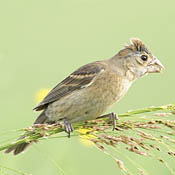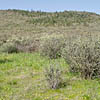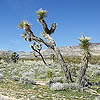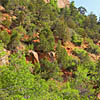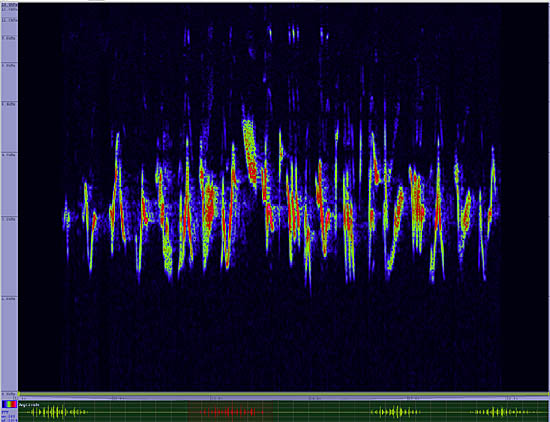Blue Grosbeak
Passerina caerulea

Perching
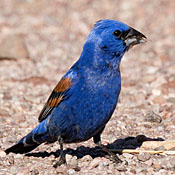
Length: 7 in. (17 cm )
The monstrous bill of the Blue Grosbeak helps it eat seeds and fruits, but it is also useful for eating an occasional snail. This species is a conspicuous resident in open woodlands, thickets and riparian shrubs. It returns relatively late in the Spring and nests well into the summer when many other species are finished. Its nest is built of twigs and usually weaves pieces of paper or bark into the outside. Late in the summer just before they migrate south it often forms flocks that feed in fields.
The four-digit banding code is BLGR.
Bibliographic details:
- Article: Blue Grosbeak
- Author(s): Dr. Biology
- Publisher: Arizona State University School of Life Sciences Ask A Biologist
- Site name: ASU - Ask A Biologist
- Date published: 13 Jul, 2017
- Date accessed:
- Link: https://askabiologist.asu.edu/activities/bird/blue-grosbeak
APA Style
Dr. Biology. (Thu, 07/13/2017 - 15:36). Blue Grosbeak. ASU - Ask A Biologist. Retrieved from https://askabiologist.asu.edu/activities/bird/blue-grosbeak
Chicago Manual of Style
Dr. Biology. "Blue Grosbeak". ASU - Ask A Biologist. 13 Jul 2017. https://askabiologist.asu.edu/activities/bird/blue-grosbeak
Dr. Biology. "Blue Grosbeak". ASU - Ask A Biologist. 13 Jul 2017. ASU - Ask A Biologist, Web. https://askabiologist.asu.edu/activities/bird/blue-grosbeak
MLA 2017 Style
Be Part of
Ask A Biologist
By volunteering, or simply sending us feedback on the site. Scientists, teachers, writers, illustrators, and translators are all important to the program. If you are interested in helping with the website we have a Volunteers page to get the process started.

